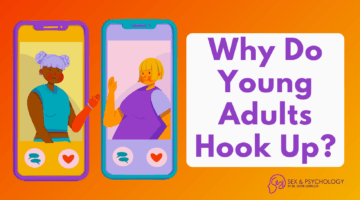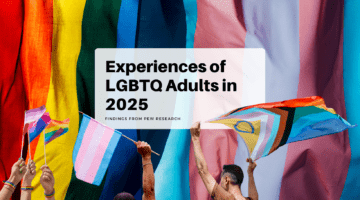Is Same-Sex Attraction “Contagious” Within Adolescent Social Networks?
April 24, 2015 by Justin Lehmiller
Many parents believe that homosexuality is contagious, being transmitted through social contact. In fact, some of them endeavor to keep their children away from gay and lesbian peers out of fear that their children will “catch the gay.” But is there any scientific basis for believing that this might actually be true? Not so much. According to a new study published in the Archives of Sexual Behavior, although adolescents’ peers appear to hold sway over each other’s sexual and romantic behaviors, this effect does not appear to extend to same-sex attraction.
In this study, researchers analyzed data from a longitudinal, nationally representative survey of US adolescents in grades 7-12 (the National Longitudinal Study of Adolescent Health, or “Add Health” as it is more commonly known). Data from over 14,000 participants were considered. The sample was about evenly split between males and females, and was diverse with respect to race. Participants answered questions about their social networks and health behaviors at three different points in time.
Researchers focused specifically on whether the sexual and romantic behaviors of adolescents were correlated with those of other participants in the study with whom they were friends.
Results revealed that friends’ sexual activity patterns (i.e., whether they had ever had sexual intercourse) were positively correlated. In other words, adolescents were more likely to have had sex to the extent that their friends were also having sex. A smaller, but still statistically significant correlation was observed for friends of friends. This means that adolescents were also more likely to have had sex if their friends’ friends were sexually active.
Similar results were found in desire for a romantic relationship. That is, the more one’s friends desired such a relationship, the more one desired a romance as well.
That said, when it came to same-sex attraction, no such spreading of desire emerged. In other words, adolescents’ patterns of same-sex attraction (whether sexual or romantic in nature) were unrelated to those of their friends.
These data are limited in the sense that only self-reported same-sex attraction was assessed. Indeed, not all adolescents who have such attraction are willing to admit it. In addition, same-sex attraction is not necessarily the same thing as same-sex behavior or holding a gay/lesbian/bisexual identity. Sexual orientation is something that can be measured in different ways, and different forms of measurement can yield different results.
Overall, these results suggest that the sexual and romantic attitudes and behaviors of adolescents are related within social networks; however, desire for a same-sex partner does not appear to spread within such networks. In other words, same-sex attraction would not appear to be “contagious” among adolescents.
Want to learn more about Sex and Psychology? Click here for more from the blog or here to listen to the podcast. Follow Sex and Psychology on Facebook, Twitter (@JustinLehmiller), or Reddit to receive updates. You can also follow Dr. Lehmiller on YouTube and Instagram.
To learn more about this research, see: Brakefield, T. A., Mednick, S. C., Wilson, H. W., De Neve, J. E., Christakis, N. A., & Fowler, J. H. (2014). Same-sex sexual attraction does not spread in adolescent social networks. Archives of Sexual Behavior, 43(2), 335-344.
Image Source: 123RF

Dr. Justin Lehmiller
Founder & Owner of Sex and PsychologyDr. Justin Lehmiller is a social psychologist and Research Fellow at The Kinsey Institute. He runs the Sex and Psychology blog and podcast and is author of the popular book Tell Me What You Want. Dr. Lehmiller is an award-winning educator, and a prolific researcher who has published more than 50 academic works.
Read full bio >


